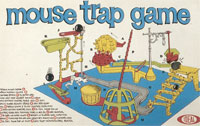As I said in my post last Sunday on Microsoft’s “Laptop Hunter” ads, it’s unrealistic to expect TV commercials to contribute to a thoughtful discussion of anything. An exercise in comparison shopping between Windows and PCs that takes place in a sixty-second Microsoft commercial just isn’t going to be fair and balanced, any more than an Apple commercial is going to explain that it’s possible to get respectable Windows laptops for a whole lot less than the cheapest Macs.
But Microsoft’s latest salvo in the Windows-vs.-Mac war isn’t a commercial–it’s a ten-page white paper by veteran analyst Roger Kay (a friendly acquaintance of mine, and, like me, a former IDG employee). Roger is independent and knows the personal computer market as well as anyone on the planet, but his paper was sponsored by Microsoft, which means that even if it’s a third-party take on things, it’s going to be one that the company is comfortable with. But the whole point of vendor-sponsored white papers is bring an independent expert’s analysis and data into a discussion in hopes that it’ll be taken more seriously than mere marketing materials.
Roger’s paper includes a bunch of tables that compare Windows PCs and Macs–sort of like what I’ve been doing, although in less excruciating detail–and an analysis of the cost of ownership of the two platforms that concludes that a family than buys two Macs instead of two Windows machines will pay a cumulative Apple tax of $3,367 over five years.
In his laptop section, Roger compares the white MacBook, new MacBook, and 15-inch MacBook Pro against various notebooks from Dell, HP, and Sony, and finds, unsurprisingly, that the Macs cost more. He shows, for instance, that the $999 MacBook comes with a skimpy 1GB of RAM, a bare-bones 120GB of hard disk space, and Intel’s uninspiring x3100 integrated graphics. For hundreds of dollars less, the chart proves, you can buy a Windows laptop with double the RAM, more than twice the disk space, and better graphics.
Pretty compelling. Except that the $999 MacBook doesn’t come with 1GB of RAM. (It has 2GB.) It doesn’t have a 120GB hard disk. (It’s 160GB.) And it doesn’t have X3100 graphics. (It has the considerably more potent NVIDIA GeForce 9400M.) Here, look for yourself. The analysis is based on the old MacBook configuration that Apple refreshed more than two months ago, but the white paper talks about it in the present tense.

 Over in the comments on my post about Microsoft’s new “Giampaolo ad,”
Over in the comments on my post about Microsoft’s new “Giampaolo ad,”  Can we all agree that it’s always a bad idea to mistake advertising for rational discourse? Axe deodorant won’t cause
Can we all agree that it’s always a bad idea to mistake advertising for rational discourse? Axe deodorant won’t cause  There’s a lot of bile flying around over a British government ad campaign that takes a hearty crack at video games.
There’s a lot of bile flying around over a British government ad campaign that takes a hearty crack at video games.
